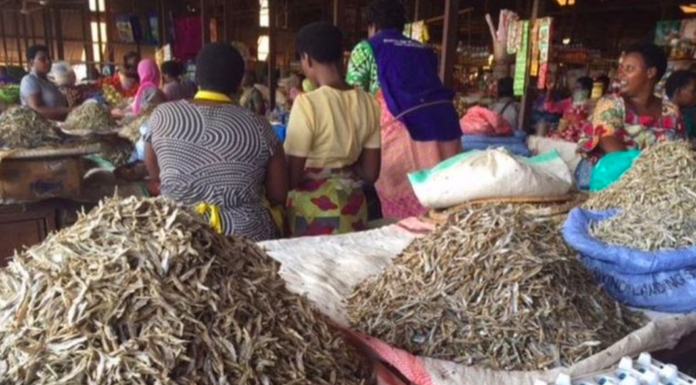In the heart of Africa’s Great Lakes region, two types of small fish have emerged as top delicacies, captivating the taste buds of many in Rwanda, Burundi, and the Democratic Republic of Congo. These are the Isambaza, a silver fish from Lake Kivu, and the Indagara, dried sardines hailing from Lake Tanganyika.
The Isambaza, prized for its unique flavor, commands a price of between Rwf 3,500 to 4,500 per kilogram (approximately $3.5), varying with the seasons. Originating from the serene waters of Lake Kivu, these fish have become a staple in local cuisine, reflecting the rich aquatic biodiversity of the region.
In contrast, the Indagara, primarily produced in Burundi and distributed across eastern DRC and Rwanda, has carved out its niche in the market. Rwandan traders have a particular affinity for these fish, not only for their profitability but also for their culinary appeal. Consumers rave about the “good soup” quality of Indagara and their lack of sandy texture, making them a preferred choice over other varieties.
The economic landscape of this trade, however, has been tumultuous in recent years. The closure of Burundi’s border with Rwanda in 2016 sent shockwaves through the market. Before this diplomatic rift, Indagara was priced at Rwf 6,000-7,000 per kilogram ($6). The closure led to a dramatic spike, with prices soaring to over Rwf 12,000 ($10). Interestingly, even after the border reopened in June 2021, prices remained high, a testament to the disruption in supply chains that had occurred during the prolonged closure.
This trade disruption had broader implications. Prior to the 2016 “export ban,” Burundi was a significant exporter of vegetables, palm oil, and fish, including Indagara, to Rwanda. With annual exports valued at over $20 million in 2015 and similar figures in other years, the ban led to a steep decline in exports by over 40%, rerouting through Tanzania instead.
The situation escalated on January 11, 2024, when Burundi once again sealed its borders with Rwanda, citing allegations of Kigali’s support for Burundian rebels. This closure affected major entry points such as Nemba, Kanyaru, and Rusizi, halting all cross-border movement, including that of Burundians and foreigners. The full impact of this recent development on trade and regional relations is yet to be fully realized, but early signs suggest significant economic repercussions.
One immediate effect of the first border closure was felt in the fruit and vegetable market. The price of mangoes in Rwanda, for instance, skyrocketed from Rwf 1,500 to over Rwf 2,500 per kilogram, and oranges experienced a similar hike from Rwf 400 to over Rwf 1,000. However, this adversity sparked a rise in local production, showcasing the resilience and adaptability of the Rwandan agricultural sector.
As the region grapples with these geopolitical and economic shifts, the humble Isambaza and Indagara remain more than just culinary delights; they are symbols of the interconnectedness and complexities of the Great Lakes region’s economies and cultures. The unfolding events will undoubtedly continue to shape the trade dynamics and regional relationships in the foreseeable future.































































